World Asteroid Day 2025 marks its 10th anniversary on 30 June to raise awareness about asteroid impact hazards, commemorate the 1908 Tunguska event, and promote global cooperation on planetary defence and space science. UN-recognised since 2016.

World Asteroid Day is a United Nations-sanctioned global awareness campaign observed annually on 30 June. It is dedicated to educating the public about asteroids, their role in the solar system, and the potential hazards they pose to Earth. The day commemorates the Tunguska event of 1908, the largest asteroid impact in recorded history, which flattened over 2,000 square kilometres of Siberian forest.
Established in 2014 and officially recognised by the UN in 2016, World Asteroid Day aims to inform the public about how asteroid impacts can affect life on Earth and the importance of developing technologies to detect and deflect potential threats.
World Asteroid Day 2025 marks the 10th anniversary of this globally recognised awareness initiative, dedicated to informing the public about asteroids, their role in our solar system, and the potential hazards of their impact on Earth. Observed annually on 30 June, this United Nations-sanctioned day commemorates the Tunguska asteroid impact of 1908 — the most significant asteroid impact event in recorded history.
While the World Asteroid Day 2025 theme has not yet been officially declared, the events aim to inspire curiosity and planetary protection through inclusive scientific engagement.
| World Asteroid Day 2025 Overview | |
| Particulars | Details |
| Event Name | World Asteroid Day 2025 |
| Date of Observation | 30 June 2025 |
| Anniversary | 10th Anniversary |
| Origin of the Day | Commemorates the 1908 Tunguska asteroid impact |
| Global Recognition | UN-sanctioned International Observance since 2016 |
| Main Venue for 2025 Celebrations | Cercle Cité, Luxembourg |
| Dates of Main Event | 26–28 June 2025 |
| Organizing Body | Asteroid Foundation |
| Expected Activities | Art and science performances, exhibitions, and technical briefings |
| Official Theme | Yet to be announced |
| Purpose | Raise awareness about asteroid impact hazards and planetary defence |
World Asteroid Day 2025 commemorates the anniversary of the Tunguska impact—the largest asteroid-related explosion in recorded history, which occurred on 30 June 1908 over Siberia, flattening 2,000 sq km of forest. The day was co-founded by astrophysicist and Queen guitarist Dr. Brian May, Apollo 9 astronaut Rusty Schweickart, filmmaker Grig Richters, and B612 Foundation President Danica Remy. These individuals launched the initiative to enhance public understanding of what are asteroids, their role in space resource utilisation, and planetary defence.
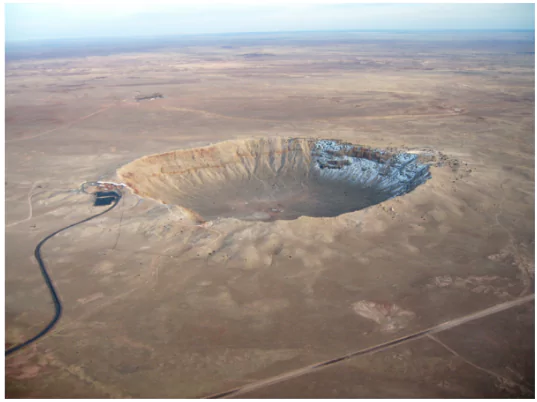
Source: NASA
In 2016, the United Nations General Assembly officially adopted 30 June as International Asteroid Day following a proposal by the Association of Space Explorers and support from the Committee on the Peaceful Uses of Outer Space (COPUOS).
List Of International National Days 2025 Month-Wise List
While the World Asteroid Day 2025 theme is yet to be formally announced, the Asteroid Foundation is hosting the 10th anniversary celebrations on June 26–28, 2025, in Luxembourg. This year’s program will blend art and science to inspire curiosity and engagement through live performances, exhibitions, and educational panels—open to the public and streamed globally.
One of the foundational efforts of World Asteroid Day is the 100x Declaration. Initiated in 2014, it calls for a 100-fold increase in the detection rate of asteroids to better protect the Earth. It has garnered the support of over 125 astronauts and numerous leaders in science, technology, and space industries, signalling widespread commitment to asteroid education and planetary safety.
Asteroids are rocky, airless remnants of the early solar system, formed around 4.6 billion years ago. Often referred to as minor planets or planetoids, these celestial objects orbit the Sun and are primarily found in specific regions of space. While many asteroids are small—some only a few meters across—others, like Vesta, can be hundreds of kilometres in diameter.
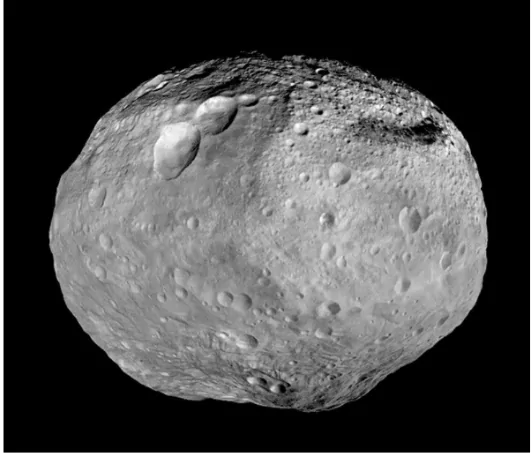
Source: NASA
Understanding asteroids is crucial not only for space exploration but also for planetary defence. Their study helps scientists uncover clues about the formation of planets and the composition of the early solar system. Additionally, some asteroids pose potential impact hazards, making their monitoring a global priority.
Asteroids are composed primarily of:
Unlike comets, which are icy and consist of frozen gases and dust, asteroids are dry, rocky, and mineral-based. Their composition varies based on their type and origin, providing essential insight into planetary differentiation and the building blocks of the solar system.
The majority of asteroids orbit the Sun in the main asteroid belt, which is why it’s often asked: “The asteroid belt is found between which two planets?” The answer is Mars and Jupiter.
1. Main Asteroid Belt Objects: These make up the largest group and reside between Mars and Jupiter. Found between Mars and Jupiter, over 1 million are estimated to be larger than 1 km.
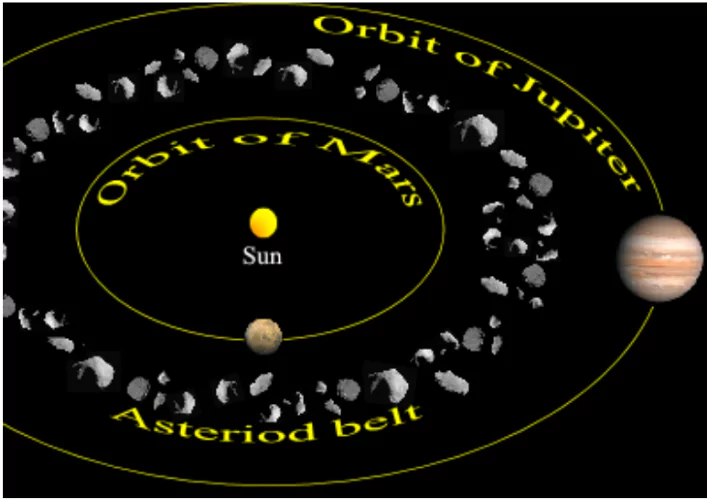
Source: Wikibooks
Apart from the main belt, there are two other significant regions:
2. Trojan Asteroids – These share orbits with planets, gathering around stable Lagrangian points. Jupiter has the most well-known collection of Trojans.
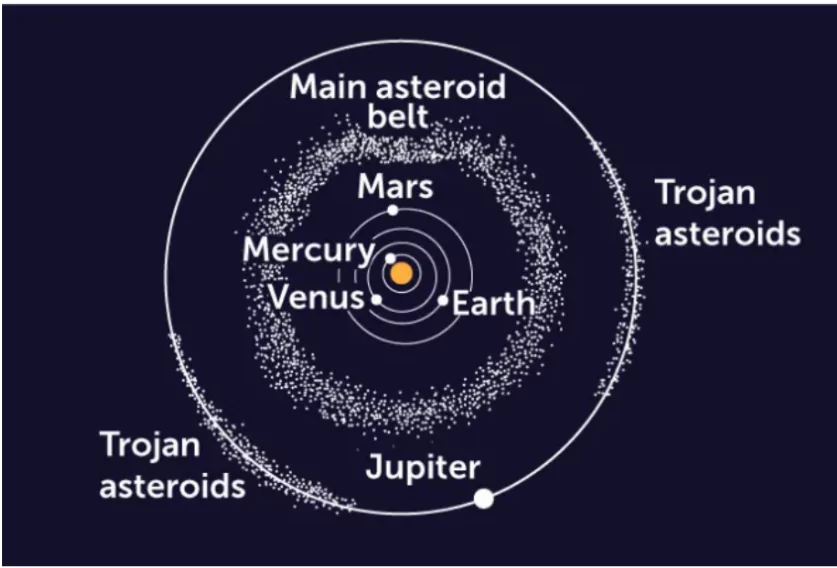
Source: Science News
3. Near-Earth Asteroids (NEAs) – These have orbits that bring them close to Earth and include Earth-crossers, posing potential risks due to their proximity.
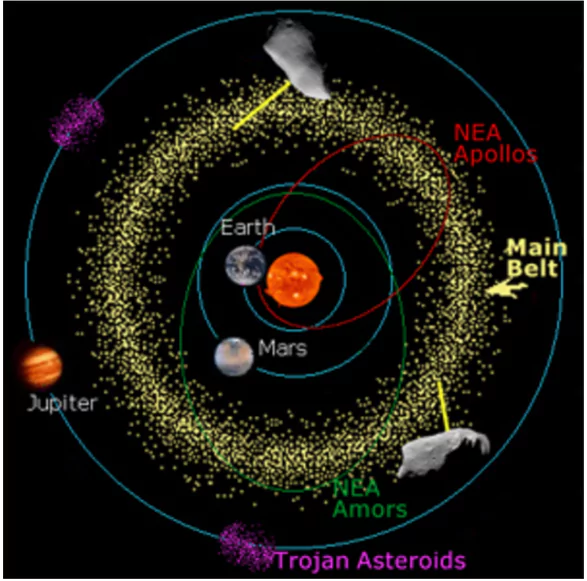
Source: ESA
In astronomy, terms like asteroid, meteoroid, meteor, and comet are often confused due to their similarities in appearance and behaviour. However, each has distinct characteristics based on size, composition, and location.
Understanding these differences is important in appreciating the diversity of celestial objects that orbit within and beyond our solar system. Here is a basic comparison to clarify these terms:
| Asteroid vs Meteoroid vs Meteor vs Comet | |||
| Object | Definition | Composition | Key Feature |
| Asteroid | A rocky object orbiting the Sun, mostly found in the asteroid belt. | Rock and metal | Larger than meteoroids; irregularly shaped |
| Meteoroid | A small fragment from an asteroid or comet travelling through space. | Rock or metal | Smaller than asteroids,the size ranges from a grain of sand to a boulder |
| Meteor | A meteoroid that enters Earth’s atmosphere and burns up. | Rock or metal (burning debris) | Visible as a streak of light in the sky, called a “shooting star” |
| Comet | An icy object that orbits the Sun, developing a glowing coma and tail when near the Sun. | Ice, dust, and rock | Known for its bright tail and long elliptical orbits |
Asteroid impacts, while rare, can cause catastrophic damage. The Chelyabinsk meteor in 2013, which exploded over Russia, had the force of 440 kilotons of TNT, injuring over 1,500 people. This highlighted our vulnerability and the urgent need for detection systems and response strategies.
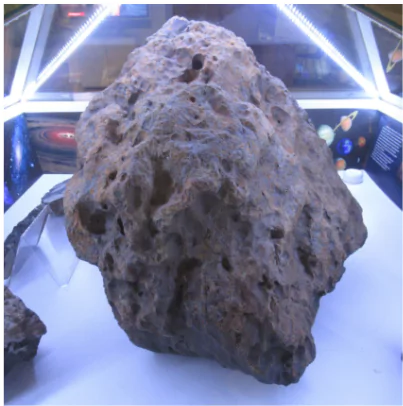
Source: Wikipedia
World Asteroid Day encourages international cooperation on:
The United Nations Office for Outer Space Affairs (UNOOSA) plays a central role in coordinating planetary defence efforts. Following the recommendations from COPUOS, two major frameworks were developed:
In a historic event, asteroid 99942 Apophis will pass just 32,000 kilometres from Earth on 13 April 2029—closer than many satellites. In preparation for this unprecedented visibility, the UN General Assembly has declared 2029 the International Year of Asteroid Awareness and Planetary Defence. This initiative aims to amplify global education and preparedness campaigns for asteroid threats and scientific opportunities.
World Asteroid Day is more than a commemoration of past events—it is a call to action for the future. By understanding what are asteroids, where they come from, how they differ from other celestial bodies, and how they can be both hazards and resources, we take a vital step toward protecting our planet.
Whether you’re a scientist, student, educator, or simply a curious mind, World Asteroid Day 2025 is an opportunity to engage with the wonders of our solar system and the serious challenges posed by NEOs. Join the global conversation and be part of building a more asteroid-aware world.
Ready to boost your UPSC 2025 preparation? Join PW’s UPSC online courses today!
World Asteroid Day is a United Nations-sanctioned day observed on June 30 to raise awareness about the risks and opportunities of asteroids.
Asteroids are rocky remnants from the early formation of the solar system, orbiting the Sun and mostly found in the asteroid belt.
Asteroids are primarily made of rock, metal, and sometimes clay or silicate materials, differing based on their type and origin.
Most asteroids are found in the asteroid belt, which is located between the orbits of Mars and Jupiter in our solar system.
The official World Asteroid Day 2025 theme has not been announced yet.
Asteroids are rocky, meteors are asteroids entering Earth’s atmosphere, and comets are icy objects that develop tails when near the Sun.

<div class="new-fform">
</div>